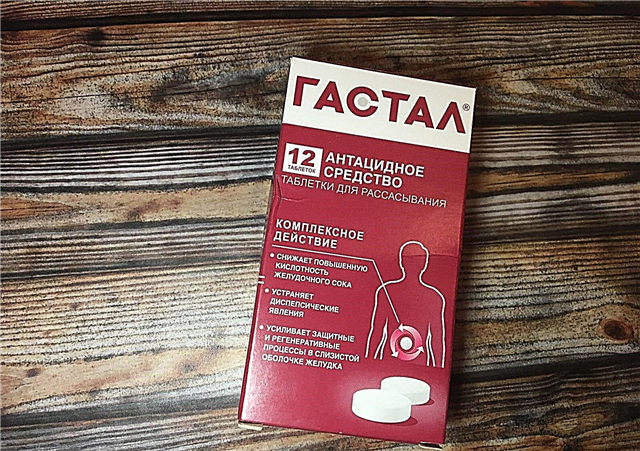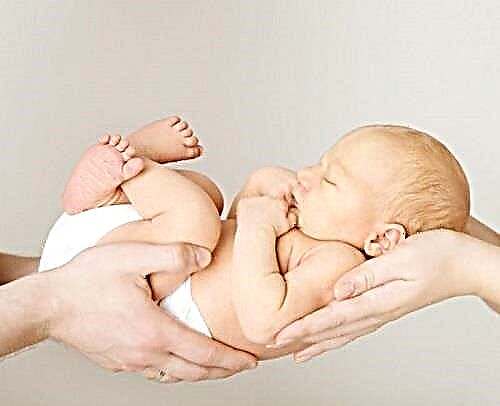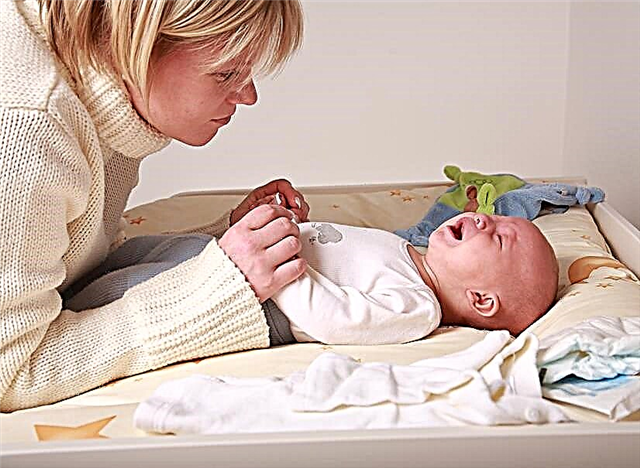If a child has a temperature of 37 ° C without symptoms, inexperienced parents are lost or give in to unnecessary panic. Whether you should be alarmed with a slight rise in degrees, what to do and what to do is a frequent question for pediatricians. You need to understand that in infants, body temperature norms differ from adolescents. What measures are needed, how to alleviate the condition of a child under 1 year old, what is the norm, and what is a sign of the disease?

Sick or healthy?
Temperature norm for a child under 1 year old
The usual temperature of 36.6 ° С for adults is not applicable for infants. Studies have established that each organ in a small body has a certain degree. Of all the internal systems, the child's liver is the hottest. The values slightly differ from each other when measured in the armpits. About one to four tenths of a degree on the left side is slightly warmer. If we compare the area of skin near the fold of the neck (34 ° C), it is significantly hotter than the surfaces of the hands and feet (24-29 ° C).
Temperature fluctuations are dependent on many factors:
- time of day for measurement - minimum value in the early morning, maximum by five o'clock in the afternoon;
- from the load on the muscles during outdoor games;
- the state of the baby - if the baby cannot calm down for a long time, screams, respectively, an increase by a couple of degrees (max 38 ° C);
- feeding time, after eating the values are higher.
Normative indicators of body temperature for children under 1 year old (measurements were made in the armpit / inguinal fold)
| Baby's age (months) | From birth to 3 | 6 | 12 |
|---|---|---|---|
| Temperature norm in ° С | 37.5 | 37.5 | 37.1 |

Temperature is normal
Pediatricians advise to calculate the individual rate for a child by monitoring values at the same time of day for 3-4 days. Measure with a thermometer should be in a calm state, when the little one is not hungry, without whims and screams. The convenient time for the procedure is between 8-9 am and between 18-19 hours. As a result, parents will receive the norm for the child in order to better navigate the change in body temperature during the day.
If the child has a temperature of 37-37.5
In the first year of life, the baby has imperfect thermoregulation, its mechanisms are just being formed. With a temperature value in the range of 37-37.5 ° C, there is no reason for alarm if the baby has normal sleep, appetite, activity. Heat transfer from the surface of the body in a small person can give some disruptions.
Parents, relatives of the toddler should know the preferences and understand the fluctuations in mood and behavior. It is necessary to seek the advice of a pediatrician if the child has a temperature of 37-37.5 ° C, and there are factors:
- disturbed sleep;
- is very capricious;
- does not want to play;
- poor appetite;
- sweat for no apparent reason;
- weight loss.
Only a specialist can assess the condition of a one-year-old child, check the heartbeat, breathing. With these symptoms, elevated degrees signal the presence of an inflammatory process or other pathology.
In all these situations, first of all, you need to pay attention to the baby's health and the constant strengthening of the defense (immune response). Parents need to understand why a healthy child can have a temperature of 37 ° C and above. Other symptoms cannot be ignored, in order not to miss the development of diseases, it is necessary to pass urine and blood tests.
Causes of subfebrile condition
With a constant rise in temperature of 37-38 ° C for the third week and more, they talk about subfebrile condition. In children of the first year of life, there are more reasons for this phenomenon, they are associated with the peculiarities of the formation of the child's body, diet, planned vaccinations, and the growth of teeth. According to the observations of pediatricians, up to 1 year old and from 8 to 14 years old, subfebrile condition (if the child has a temperature value of 37 5 or slightly higher) is a frequent occurrence.
Overheat
Different types of overheating (sunstroke or heat) are similar in nature, but there are significant differences. Children under one year old react to heatstroke:
- pain in the head;
- nausea;
- persistent fever (subfebrile condition).
Babies have poor thermoregulation. After overheating, breathing is sometimes difficult, in severe cases, loss of consciousness is possible. Appearance is possible:
- lethargy;
- throwing your head back for no reason;
- rolling eyes;
- increased tearfulness.
When the baby is in shock, pallor and weak breathing, he is transferred to a shade or a cool room. First aid in this case - the child must breathe with the entire surface of the body. Undress him completely, covering him with a diaper, raise the baby's legs and give him plenty of water. Applying cold lotions to the area of the large vessels will give relief. Calling an ambulance and further actions by staff will help avoid further complications.
When the air temperature in the room is more than 18 ° C, the child does not need warm clothes over the undershirts and sliders. The optimal mode in the room is 18-22 degrees.
Attention! Do not wrap a child before going outside. The amount of warm baby clothes should be consistent with adult clothing. Excessive wrapping, an extra pair of socks, and a hat will only harm the baby.
Vaccination
Typically, a rise in temperature is provoked by BCG and DTP vaccinations. Less often, such a reaction after the vaccine against polio, mumps, rubella, measles. There is a short-term increase after DPT, hepatitis vaccinations. With today's complex vaccine formulations, a rise in temperature is one of the common symptoms. Along with this, there are:
- aches in muscles, joints;
- slight runny nose and cough;
- rash on the body;
- sore throat.

Vaccination calendar up to a year
If the child is not very worried about the rise in body temperature, it can not be knocked down. In complicated cases, it is recommended to give antipyretics: syrup or put a candle. Within 14 days after the vaccination, you must carefully assess the condition of the child. You can't violate the regime, you need to walk, keep a regular schedule.
Emergence of teeth
Teething is a difficult period for babies. Usually accompanied by various side effects:
- increased salivation;
- increased moodiness;
- loss of appetite;
- persistent rise in temperature.
If a child has a temperature of 37 or slightly higher at the time of eruption, this is not always a cause for alarm. Rarely does a baby's mother accidentally discover a new tooth while feeding. Subfebrile condition is a frequent occurrence when incisors appear.

Teething
Attention! The body needs an increase in body temperature at this time. The produced interferon kills pathogenic bacteria, helps the baby cope with gum disease.
After the tooth comes to the surface, the baby's well-being improves, there is no reason for concern. The active period associated with teething falls on the age of six months and older.
Protein complementary foods
At the age of 6 months, various products are consistently introduced into the infant's diet, including proteins: dairy products, meat complementary foods. Protein is extremely necessary for the baby, but during the period of increased supplementation, a reaction against the background of dehydration is possible. A caring mother, rejoicing that the baby ate cottage cheese, meat puree, plus the usual milk feeding, forgets to drink him. This provokes protein fever in newborns.
It is not dangerous for a healthy baby. The reaction to an increase in protein in the diet is indicated by a decrease in the volume of food eaten per feeding or a small whim.
When the temperature is 37 without symptoms
Due to natural activity and emotionality, the child has a constant temperature rise of 37 and above. Physiology can provoke an increase in degrees, but this should not frighten parents. A real assessment of the child's condition, unchanged sleep, appetite, lack of increased moodiness - all this indicates that there is no need to worry.
In a latent form, there may be pathologies:
- viral (herpes simplex);
- genitourinary system;
- with cytomegalovirus.
Attention! If the hyperthermia is protracted, a pediatrician is needed. To avoid complications, the child should be examined, the treatment should be timely.
Temperature reasons 37-37.5 weeks
Depending on the protective functions, if the temperature value for several days is in the region of 37.5 ° C, development is possible:
- Infectious processes. In children, this is a natural response to fighting viruses. With an increase in the values of degrees, the body develops its own defense - the interferon protein. Its amount depends on the severity of the condition. With a mild degree, a runny nose, coughing appears, the size of the lymph nodes slightly increases.

Virus temperature
- Parasitic infection. Helminths live and reproduce, in addition to the gastrointestinal tract, in other organs and systems. At the same time, a lot of laid eggs provokes intoxication and the development of inflammation. Immunity gradually decreases, which leads to an exacerbation of chronic pathologies (if any). A low temperature without major changes and signs accompanies these processes.
- Non-infectious inflammation. These include colitis, arthritis, lupus erythematosus, etc. - autoimmune pathologies. These are rare diseases for children. With their development, diseased cells change healthy ones, forming antigens. With such a failure, the body begins to fight them, as a result of which antibodies are produced. The immune mechanism works against its own health, the death of native cells begins. The symptoms of lupus erythematosus are slight redness (rash) in the cheeks, nasolabial area. With rheumatoid arthritis, weight loss, weakness, sweating are possible. Ulcerative colitis causes abdominal pain, diarrhea.
- Allergies. It does not provoke a rise in temperature. The problem is in the development of inflammatory processes when exposed to the child's body. Insect bite, drug intolerance, reaction to food pathogens - far from a complete list of allergens for babies.
- Pathologies after surgery. After stress, temperatures up to 37.5 ° C indicate the work of the protective functions of the child's body. You should watch the baby, his reaction for 3-5 days. When the temperature is delayed for a week, you do not need to worry. A long-term increase should cause concern: for a month or more. This is a clear sign of an ongoing inflammatory process.
- Diseases of the heart muscle, blood vessels, lungs, skin or nervous system. In this case, the temperature is a consequence of inflammation. Until the cause is eliminated, the problem will remain.
- Immunodeficiency, oncological processes. If there is no appetite, weight quickly decreases, there is weakness - these are painful symptoms from the lesion.
All the reasons why the child's temperature value is above 37 for more than a week are dangerous. Qualified consultation with a pediatrician and drug therapy are required.
What to do at high temperatures
If your baby has a fever, call a doctor right away. For ages less than three months, a sharp jump in temperature is life-threatening. The rapid development of events can lead to a rapid deterioration in the general condition. While there is no doctor, it is necessary to perform activities:
- ventilate the room, avoiding drafts, the room should be about 19-21 degrees;
- you cannot wrap up a baby,
- make it as easy as possible for air to reach the body, even a diaper covers more than 30% of the entire skin.
The child needs to be drunk. When breastfeeding, apply to the breast. If he is on artificial feeding, give boiled water or tea with fennel.
Attention! The volume of liquid for the baby should not be given in large portions. This can cause a gag reflex.

The temperature dropped
Methods based on increasing heat transfer help to lower the temperature. This is wiping with wet wipes at 36-37 ° C. You can put a compress on the forehead, periodically wetting it.
If the doctor deems it necessary, he will prescribe antipyretic drugs to the baby. This is only an adjunctive therapy, you need to determine the cause of the high temperature values. If the disease is viral, Interferon and its analogues are prescribed. Antibacterial drugs are prescribed for infection.
Up to a certain value, the rise in temperature has protective functions. This increases the production of its own proteins, suppresses the growth of pathogenic bacteria. If the child has a temperature of 37 6 without a single symptom, you need to wait 2-3 days. If it does not subside, medical attention is required.



